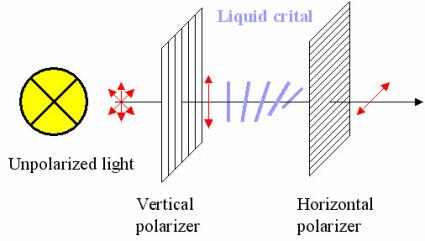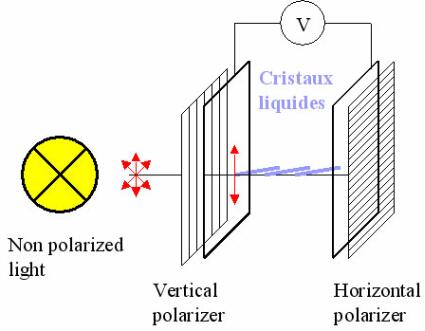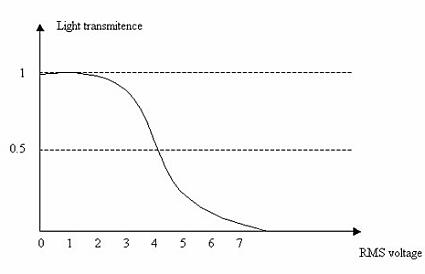LCD Or Plasma - What's Your Pleasure? Understanding Modern Flat-Panel TV Technologies
In Detail
Let's see how this light switch operates.
The backlighting emits natural, non-polarized, white light. The polarization of light is determined by the orientation of its electric field vector. Without going into too much detail, light is an electromagnetic wave. Its electric and magnetic field vectors are perpendicular to the direction of its movement. A lamp emits non-polarized light, so the electrical field can travel in any direction perpendicular to the axis of propagation of the light. When light passes through a polarizer, the light that comes out the other side has an electric field vector oriented in a known direction (vertical in our example). If the light is then passed through a second polarizer, perpendicular to the first (horizontal in this example), no light can pass through. But if a liquid crystal is placed between the two polarizers, the crystal turns the plane of polarization of the light to align with the second polarizer, and the light can then pass through. This natural property of liquid crystals is what accounts for their success in display technologies.
Now, if a direct current is introduced at each end of the liquid crystal, the crystals orient themselves with the difference in potential, a little like the way a magnet orients itself to the Earth's magnetic field. By preventing rotation of the plane of polarization in this way, the crystals prevent the light from passing through the horizontal polarizer, since it remains vertically polarized. The beam of light is interrupted.
By varying the voltage on the terminals of the liquid crystal, the closure of the "switch" can be modulated more finely to produce intermediate states.
Get Tom's Hardware's best news and in-depth reviews, straight to your inbox.


